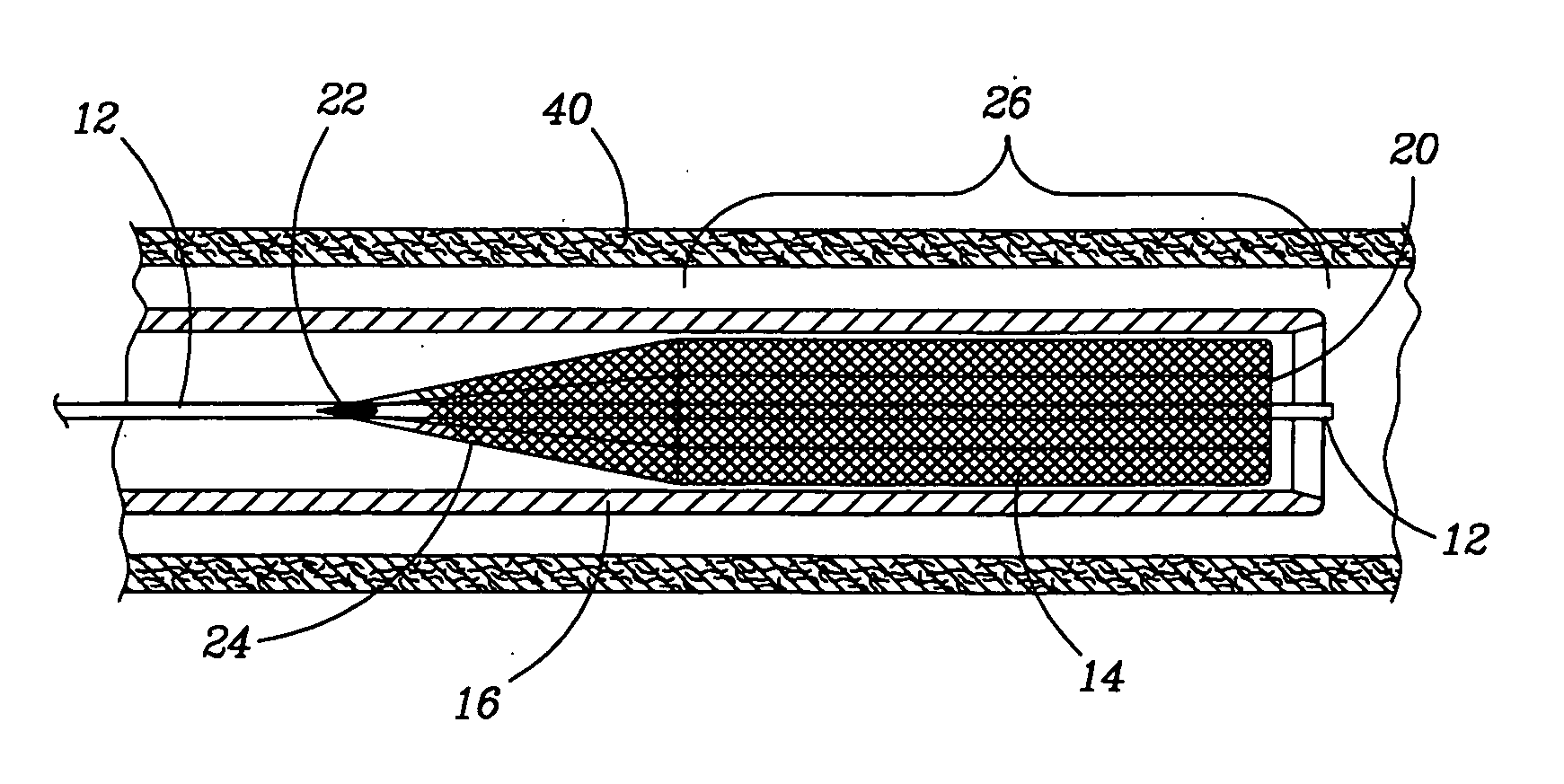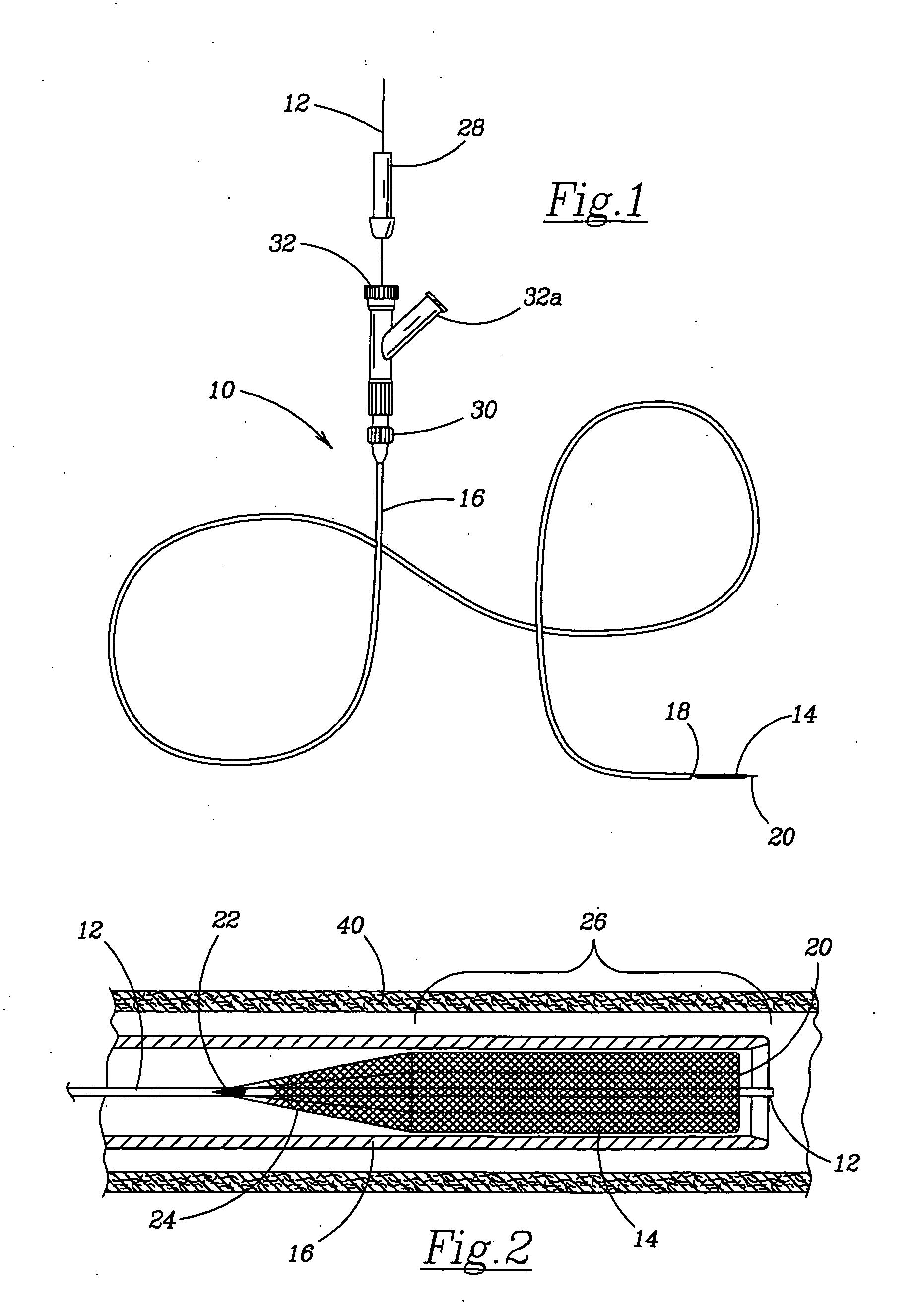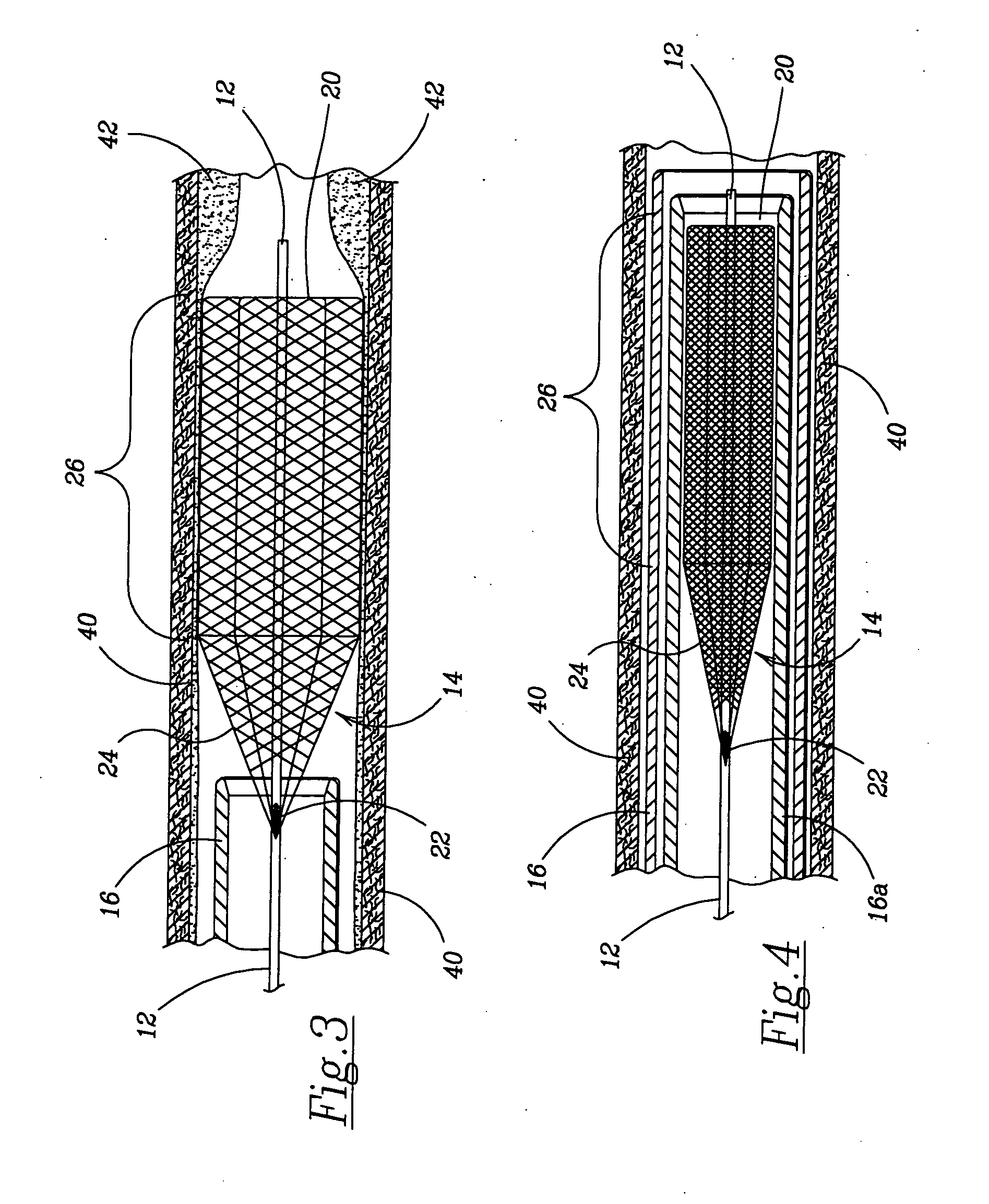Retractable flow maintaining stent wire
a technology of stent wire and retractable flow, which is applied in the field of retractable flow maintaining stent wire, can solve the problems of balloon stents that have the diameter and flexibility to get into the cerebral circulation but cannot allow fluid flow when expanded, and the risk of bleeding is usually not high, so as to reduce the risk of bleeding and reduce the systemic tpa release
- Summary
- Abstract
- Description
- Claims
- Application Information
AI Technical Summary
Benefits of technology
Problems solved by technology
Method used
Image
Examples
Embodiment Construction
[0031]The following detailed description is of the best presently contemplated mode of carrying out the invention. The description is not intended in a limiting sense, and is made solely for the purpose of illustrating the general principles of the invention. The various features and advantages of the present invention may be more readily understood with reference to the following detailed description taken in conjunction with the accompanying drawings.
[0032]Various embodiments of the retractable flow maintaining stent wire for delivering and retracting a self-expanding stent in accordance with the invention are described herein. Referring now to the drawings in detail, where like numerals refer to like parts or elements, there is shown in FIG. 1 a catheter 10 including a manifold 30 with a main port 32 and auxiliary port 32a. Mounted through the main port 32 is a guide wire 12 that exits through the manifold 30 and through the hollow shaft 16. At the distal end of the shaft 16 the ...
PUM
 Login to View More
Login to View More Abstract
Description
Claims
Application Information
 Login to View More
Login to View More - R&D
- Intellectual Property
- Life Sciences
- Materials
- Tech Scout
- Unparalleled Data Quality
- Higher Quality Content
- 60% Fewer Hallucinations
Browse by: Latest US Patents, China's latest patents, Technical Efficacy Thesaurus, Application Domain, Technology Topic, Popular Technical Reports.
© 2025 PatSnap. All rights reserved.Legal|Privacy policy|Modern Slavery Act Transparency Statement|Sitemap|About US| Contact US: help@patsnap.com



